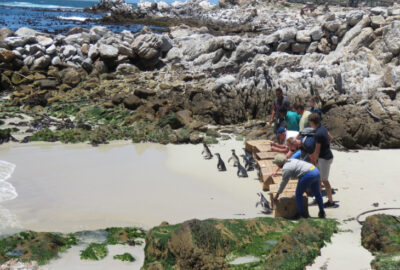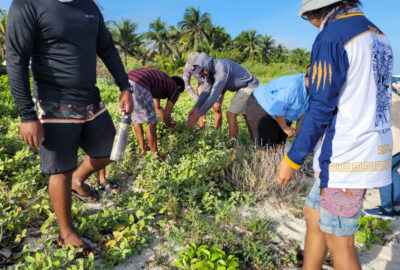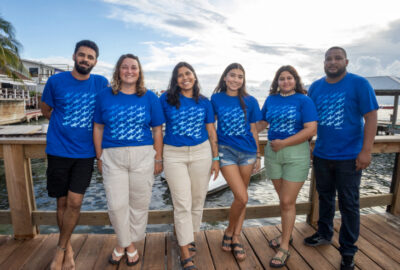Celebrating 25 Years of Counting Sea Turtles in Guatemala
By New England Aquarium on Friday, March 18, 2022

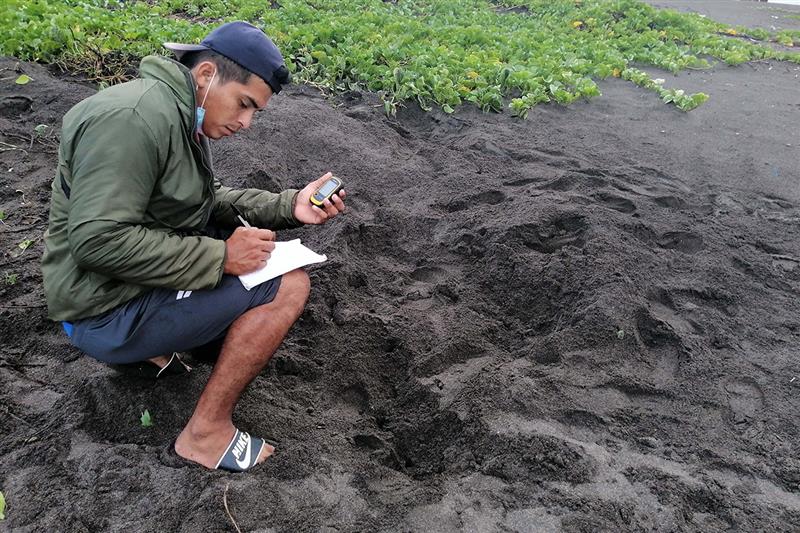
By Colum Moccio
I came to ARCAS from the United States as a volunteer in 1994, and was intrigued by the dedication and commitment of its staff to the conservation of Guatemalan wildlife. I initially visited ARCAS’ wildlife rescue center in the Maya Biosphere Reserve, in the northern region of Peten, which has since blossomed into a model rescue center for the Americas. I also visited its Sea Turtle and Mangrove Conservation Project in the Hawaii Park on the southern coast of Guatemala. ARCAS had just taken over the management of the park and sea turtle hatchery from the Guatemalan government, and due to the Hawaii project being the newest project in need of the most help, I decided to initially volunteer there.
I had just spent four years working in international development in Japan, and with my connections, we received funding from the Japanese Environment Ministry to build a hatchery, a central rancho and volunteer house at the Hawaii Park. Given the fact that I’m bilingual with a background in development, ARCAS’ staff quickly dragged me, kicking and screaming, into the Guatemala City office to raise funds for the rapidly growing NGO. However, even with the fundraising efforts, I continued supporting the Hawaii Sea Turtle Project which was only 3 hours away by car, rather than 10 hours to Peten.
In 1997, we received a Japanese JOCV (Japan Overseas Cooperation Volunteers) volunteer, Gen Oshima, assigned to the Hawaii Park. He lived one kilometer down the beach and walked to work every day, so I asked him to write down the number of sea turtle nesting crawls he saw. This was the humble beginning of ARCAS’ sea turtle crawl count population monitoring program. I was amazed at the time that while there were 25 hatcheries operating along the Pacific coast of Guatemala, no one was collecting sea turtle population data.
In 2003, with the support of Ambio, a British NGO, and the European Union volunteer program, we formalized the population monitoring program. We established a methodology using GPS, with fixed transects on either side of four hatcheries on different sites of the Pacific coast as well as developing a system for measuring the temperatures of nests in the hatcheries. In 2013, we established the present, permanent crawl count survey program on 7 index beaches along the Pacific coast, helped in large part by the Marine Turtle Conservation Fund, a branch of the United States Fish and Wildlife Service (USFWS).
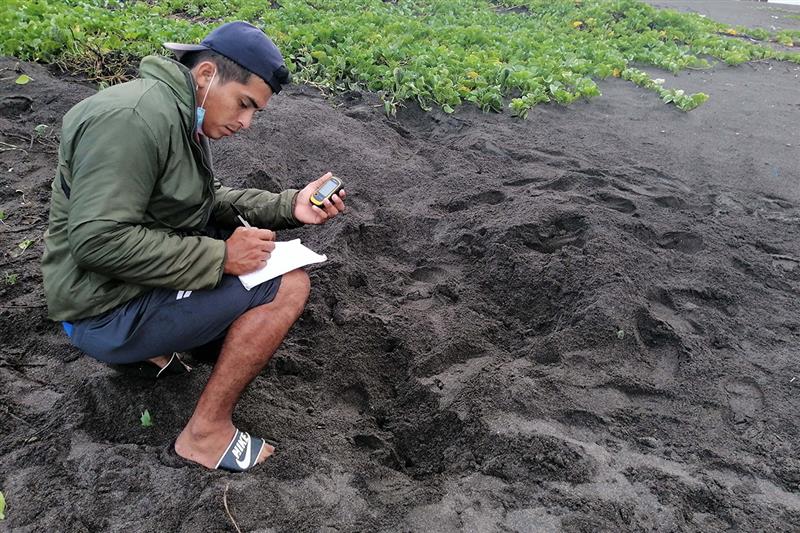
With the crawl data gathered at the 7 index beaches, we can estimate the overall Guatemalan sea turtle population and its trends over the years. We can also evaluate conservation measures, especially the 20% egg conservation quota. Under a conservation quota system established in the 80s, local collectors are allowed to harvest olive ridley eggs as long as they donate 20% of each nest to a registered hatchery. Harvesting is only permitted of olive ridleys; all other species are off-limits. Despite the 80% egg harvest, our crawl count data has found that the population trend of the olive ridley is increasing. At the Hawaii beach, the number of nesting crawls has increased from 906 in 2003 to 1,422 in 2019.
Regarding the 20% olive ridley egg donation quota, we have found that thanks to the purchase of nests by tourists and the private sector, we usually surpass that percentage, and in 2019, 35% of all eggs laid on the Pacific coast were rescued and incubated in hatcheries.
However, as is true throughout the Pacific, the leatherback turtle is in grave danger. Only 6-10 nests per year were recorded in the late 90s, and in recent years, that’s dropped to 0–4 nests per year. It’s also documented that leatherback nests also suffer from a very low hatching success rate.
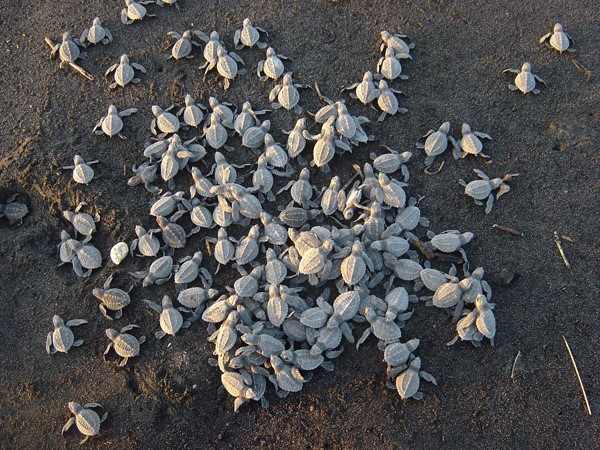
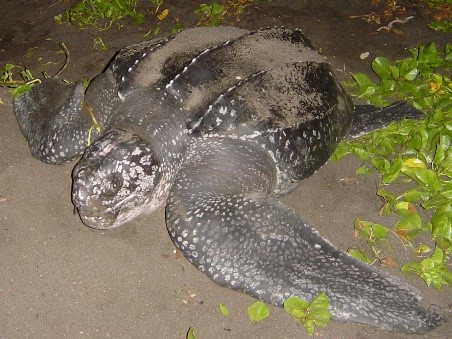
So, after 25 years of counting sea turtle crawls, what have I learned? In these days where everyone is in love with their smart phones, self-driving cars and satellite imagery, for us on the ground, (OK, we use GPS there is still no replacement for boring, community-based, basic research… walking the beach at dawn, counting crawls. We are tremendously proud of the fact that the ARCAS crawl counts are the only long-term dataset on the marine resources of the Pacific coast of Guatemala. Our most sincere thanks to our crawl counters – Melvin, Dany, Claribel, Adolfo, Santos and Isias – who in 2021 collectively walked a total of 6240 kms, GPS in hand, in the wind, rain, and sun, recording nesting crawls and stranded turtles. And, of course, our many thanks to the New England Aquarium Marine Conservation Action Fund, SeeTurtles, WIDECAST and the Columbus Zoo for supporting our 2021 crawls. We hope to have the updated version of our Situational Analysis ready by the end of April. If you want to come help us count crawls and release hatchlings, or donate to our Sponsor-a-Nest program, check out our website at www.arcasguatemala.org.
You can see the full version of the Situational Analysis in Spanish and an English summary on ARCAS’s publications page at https://arcasguatemala.org/who-we-are/arcas-publications/.

